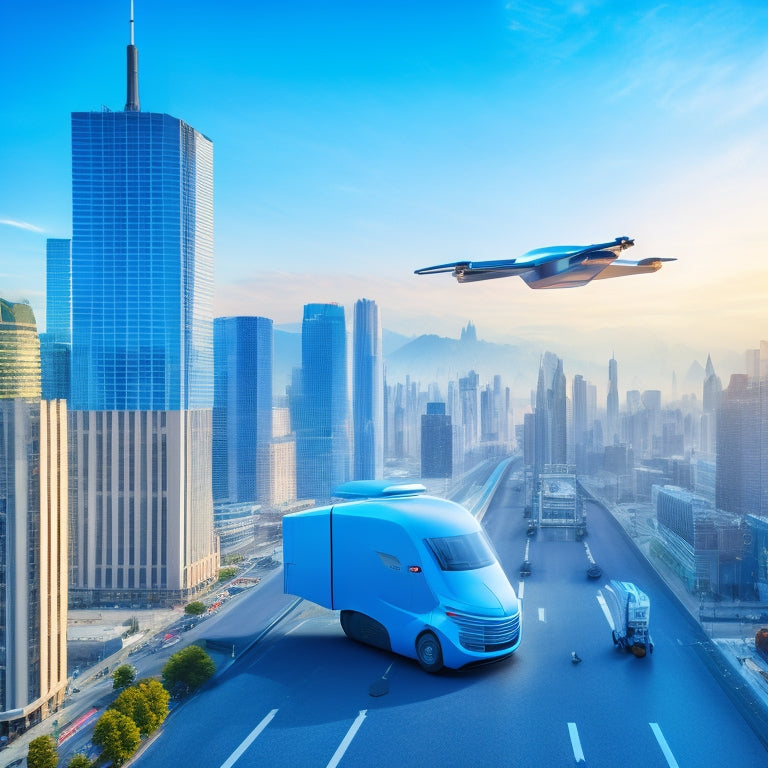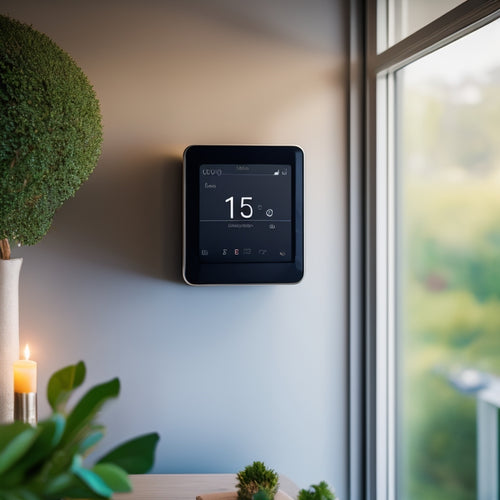
Postal Service Revolutionizes Delivery With EV Innovations
Share
The United States Postal Service (USPS) is revolutionizing its delivery network by integrating electric vehicle (EV) innovations. Over 400 sites are being transformed into Service and Distribution Centers (S&DCs) that serve as local hubs for EV deployment, enhancing mail and package delivery across larger areas. This modernization effort includes a plan to procure 21,000 commercial-off-the-shelf (COTS) EVs and add at least 45,000 Next Generation Delivery Vehicles (NGDVs) by 2028. As the USPS continues to push the boundaries of sustainable delivery, its commitment to innovation is poised to have a lasting impact on the industry. Further exploration reveals additional details on this transformative journey.
Key Takeaways
• The USPS is transforming 400 sites into Service and Distribution Centers (S&DCs) to enhance mail and package delivery over larger areas.
• The USPS plans to procure 21,000 commercial off-the-shelf electric vehicles (EVs) and anticipates adding at least 45,000 next-generation delivery vehicles by 2028.
• The integration of S&DCs and a nationwide EV charging network enables the efficient deployment of EVs, reducing greenhouse gas emissions and operating costs.
• The modernized fleet, including Ford E-Transits with triple cargo capacity, enhances operational efficiency and supports larger delivery volumes.
• The USPS's fleet electrification and infrastructure upgrades drive sustainability, reducing emissions and carbon footprint, and setting a new standard for operational sustainability.
Modernizing the Delivery Network
The United States Postal Service (USPS) is revolutionizing its delivery network by transforming approximately 400 sites into state-of-the-art Sectional Center Facilities (S&DCs), which will serve as local hubs for electric vehicle (EV) deployment and enhance mail and package delivery over larger areas.
This network expansion enables operational transformations, such as infrastructure upgrades and delivery optimization. The S&DCs will provide faster and more reliable mail and package delivery, increasing efficiency and reducing transportation inefficiencies.
With 29 S&DCs already opened nationwide, the USPS is poised to enhance its delivery capabilities, paving the way for a more sustainable and efficient delivery network.
Electrifying the Fleet Nationwide
By committing to vehicle electrification, the USPS is spearheading a nationwide effort to transform its fleet, with plans to procure 21,000 commercial off-the-shelf (COTS) electric vehicles, including 9,250 from Ford, and anticipating the addition of at least 45,000 battery-electric next-generation delivery vehicles by 2028.
| Vehicle Type | Quantity | Manufacturer |
|---|---|---|
| COTS EVs | 21,000 | Ford, others |
| NGDVs | 45,000 | Ford, others |
| Total EVs | 66,000+ | Multiple |
This national electrification effort is a significant step towards a more sustainable future, supporting the USPS's commitment to reducing its carbon footprint. The fleet expansion will enable the USPS to reduce greenhouse gas emissions and operating costs, while improving overall efficiency and reliability. With this ambitious plan, the USPS is poised to lead the way in electric vehicle adoption, setting a new standard for sustainable delivery operations.
Enhancing Efficiency Operations
Optimizing logistics and infrastructure, the USPS is modernizing its operations to enhance efficiency, reduce inefficiencies, and increase delivery speed through the integration of state-of-the-art Sorting and Delivery Centers (S&DCs) and a nationwide EV charging network.
This modernization effort focuses on efficiency enhancements, leveraging S&DCs as local hubs for EV deployment to cover larger areas. The nationwide EV charging network supports the growing EV fleet, ensuring seamless operations.
Operational advancements include updated fleet capabilities, enabling larger mail and package volumes, and reducing inefficient transportation. With Ford E-Transits boasting nearly triple the cargo capacity of current vehicles, delivery operations are streamlined, minimizing second trips and enhancing overall efficiency.
Sustainability Through Innovation
Electrification of the USPS fleet, coupled with infrastructure upgrades, forms the basis of a holistic sustainability strategy, driving transformative environmental benefits through reduced emissions and carbon footprint.
This commitment to operational sustainability is bolstered by technological advancements, such as the rollout of state-of-the-art S&DCs and a nationwide EV charging network. By leveraging these innovations, the Postal Service is poised to make significant strides in reducing its environmental impact.
The modernization of its fleet and facilities will lead to increased efficiency, reduced energy consumption, and a lower carbon footprint. As the USPS continues to prioritize sustainability through innovation, it sets a new standard for operational sustainability in the industry.
Revolutionizing the Delivery System
The Postal Service's rollout of state-of-the-art Sectional Center Facilities (S&DCs) marks a critical milestone in revolutionizing the delivery system, enabling faster and more reliable mail and package delivery over larger areas. This transformation is made possible by innovative technologies and operational advancements. The S&DCs will serve as local hubs for EV deployment, enhancing mail and package delivery efficiency.
| Facility | Description | Benefits |
|---|---|---|
| S&DCs | State-of-the-art facilities for EV deployment | Faster and more reliable delivery |
| Nationwide EV charging network | Supports USPS EV fleet | Enhances efficiency of EV deployment and operations |
| Modernized fleet | Increased cargo capacity and efficiency | Reduces inefficient transportation and eliminates second trips |
| Sustainability focus | Continuous operational improvements | Reduces carbon footprint through operational enhancements |
| EV commitment | One of the largest commitments to vehicle electrification | Enhances overall efficiency and delivery network |
Frequently Asked Questions
Are S&Dcs Replacing Existing Post Offices or Mail Processing Centers?
Like a puzzle piece fitting into place, S&DCs complement existing infrastructure, rather than replacing it, with strategic urban consolidation and rural impact assessments ensuring harmonious coexistence with post offices and mail processing centers.
What Is the Estimated Timeline for Completing the Nationwide EV Rollout?
The EV Roadmap outlines a fleet shift, with USPS aiming to deploy over 66,000 electric vehicles by 2028, with a phased rollout expected to complete within the next five years, aligning with the organization's commitment to electrification.
Will the Postal Service Offer Public EV Charging at S&Dcs?
The Postal Service is exploring opportunities to offer public EV charging at S&DCs, potentially integrating charging stations as hubs, fostering a convenient and sustainable charging experience for the community.
Can the Public Purchase Ford E-Transits for Personal Use?
Can the public tap into the Postal Service's EV momentum? Unfortunately, Ford E-Transits are currently only available for commercial fleets, but individual adoption may be sparked by fleet incentives, driving EV adoption and a broader market shift.
Will USPS EVS Be Compatible With Residential Charging Stations?
USPS EVs will be compatible with residential charging stations, adhering to standard Level 2 charging protocols, ensuring seamless home charging integration, while conforming to industry-defined Station Standards for efficient and convenient charging.
Related Posts
-

3 Ways Wind Power Boosts Home Value
Living near a wind farm can enhance your property's value in three significant ways. To begin with, proximity to wind...
-

Smart Energy: Greener Homes With Connected Power Devices
You can control and optimize your energy consumption with smart energy devices, reducing your carbon footprint by up ...
-

7 Solar-Safe Window Solutions for Earth-Conscious Homeowners
As an earth-conscious homeowner, you're likely keen to find solar-safe window solutions that align with your values. ...


